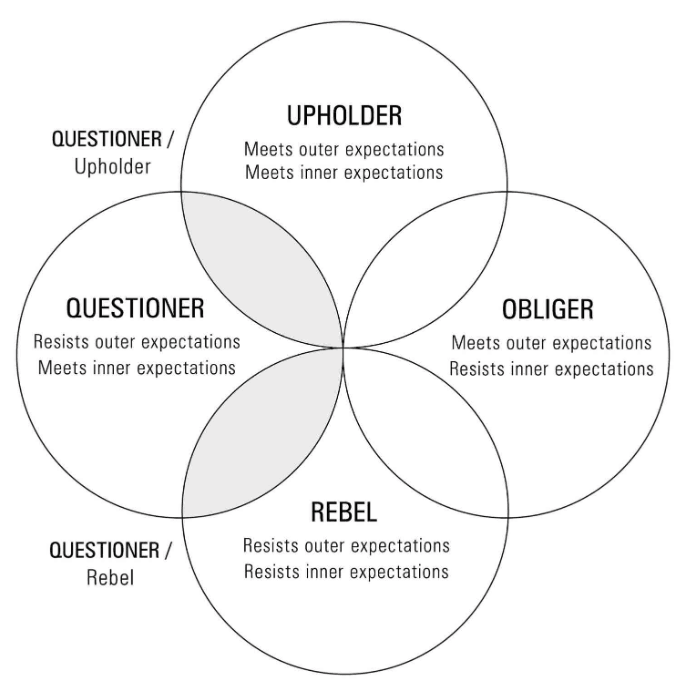This book wasn’t actually on my reading list. I was listening to the Happiness podcast and the speakers were talking about setting New Year’s Resolutions – the point is that different tendencies are motivated differently and therefore should go about their goals differently.
These “tendencies” refer to the Four Tendencies as set by Gretchen Rubin in her book, The Four Tendencies. These tendencies refer to your personality type in so far as how you are motivated. If you don’t already know your type, you can take the quiz.

My goal with reading this book was to better understand my own type, questioner, and be better able to reach my own New Year’s Resolutions/goals in general.
My takeaways
The Four Tendencies explain why we act and why we don’t act. It doesn’t need to be mapped to another type, such as astrological sign or MBTI – it’s an insight into a narrow type of your personality that explains how you’re motivated.
It’s important to remember that a tendency is just that. At the end of the day, what matters is what works for each individual.
Sub-types
The author says that you will always be just one type – here’s an example from the book:
During a visit to my old high school, where I spoke about the Four Tendencies, a senior insisted, “I’m a mix of Tendencies. Sometimes I act one way, sometimes another, depending on the situation.”
“For example?” I asked.
“If I get an assignment from a teacher I respect, I do it, no problem, so I’m an Upholder. But if I don’t respect the teacher, I won’t do it. So I’m a Rebel. So I’m different, depending on the situation.”
“Actually, no,” I said. “That’s pure Questioner. A Questioner’s first question is “Why should I listen to you, anyway?”
On the other hand, each type can show a variation into a neighboring tendency – for example, a Questioner can overlap with Upholder as well as Rebel:

I found this fascinating, because while your personality will only have one tendency, you can have variations within that tendency – that explains why I have definite rebel leanings.
Messaging
Chapter 12, Speaking Effectively to Each Other, contains a section on analysing messaging and why it does (or doesn’t) work. While the examples are fun, the point is that:
To craft a sign that works well for all Four Tendencies, we should provide information, consequences, and choice. This is the sequence that works for Rebels, of course, plus Questioners cooperate better when they have information and justification, and Obligers, when they know consequences. Upholders tend to follow a rule.
I’ll be keeping this in mind when sharing information and making requests.
Setting my own goals
I was hoping this book would tell me that as a Questioner, I should do x, y, and z to set and achieve my goals. While I didn’t find that, a bit of thinking did help me. When setting goals, I need to be 100% behind them: I can’t choose an arbitrary goal, because I won’t have the inner expectation to meet it. I tend to ignore my goals in the heat of the moment – I’m going to try reminding myself of why I chose this goal/this sub-action as a way to support that inner expectation.
Who would I recommend this book to?
Different parts of this book are relevant, depending on what information you’re looking for. It covers:
- Understanding the different tendencies
- Understanding how the different tendencies function in a workplace (each tendency has a section on working with them, for example), as well as friends and family members
- Understanding how the different tendencies work together (there’s a whole chapter comparing different tendency pairings)
So I’d recommend this to:
- Anyone looking to better understand their own tendency and gain insight into their own motivations
- Anyone looking to better understand someone with a different tendency, for example a friend, colleague, etc. This could be useful for a team lead or a coach as well.
- A team looking to understand how the different personality tendencies function
Featured photo by Danielle MacInnes on Unsplash

